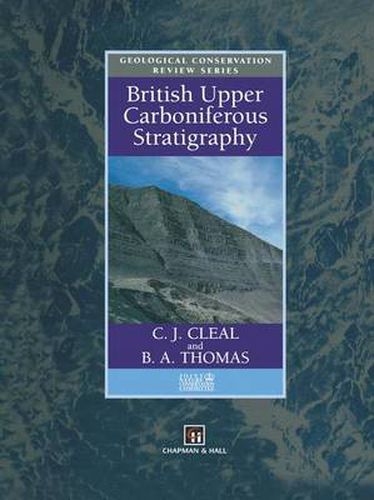Readings Newsletter
Become a Readings Member to make your shopping experience even easier.
Sign in or sign up for free!
You’re not far away from qualifying for FREE standard shipping within Australia
You’ve qualified for FREE standard shipping within Australia
The cart is loading…






This title is printed to order. This book may have been self-published. If so, we cannot guarantee the quality of the content. In the main most books will have gone through the editing process however some may not. We therefore suggest that you be aware of this before ordering this book. If in doubt check either the author or publisher’s details as we are unable to accept any returns unless they are faulty. Please contact us if you have any questions.
This volume summarizes the results of a survey of British Upper Carboniferous sites, undertaken between 1978 and 1990 as part of the Geological Conservation Review (GCR). The GCR was the first attempt to assess the scientific significance of all Britain’s geological sites and has proved a landmark in the development of a coherent geological conservation strategy in this country. To ensure that the assessments were based on a firm logical and scientific foundation, the range of scientific interest was divided into ninety-seven discrete subject ‘blocks’, reflecting the natural divisions of stratigraphy, palaeogeography and geological process; Westphalian stratigraphy and Namurian stratigraphy were two of these blocks. The first stage in the survey was a review of the literature, to establish a compre hensive database of sites. From this, a provisional list of potentially significant sites was made and this was circulated to all relevant specialists in this country and abroad. At the same time, the sites were visited to assess their physical condition and whether the interest was still extant. In some cases, excavation (so-called ‘site-cleaning’) was carried out to see if the interest of a site could be resurrected or enhanced. The com ments made by the specialists and the field observations were then used to produce a second site list, which again was circulated for comment.
$9.00 standard shipping within Australia
FREE standard shipping within Australia for orders over $100.00
Express & International shipping calculated at checkout
Stock availability can be subject to change without notice. We recommend calling the shop or contacting our online team to check availability of low stock items. Please see our Shopping Online page for more details.
This title is printed to order. This book may have been self-published. If so, we cannot guarantee the quality of the content. In the main most books will have gone through the editing process however some may not. We therefore suggest that you be aware of this before ordering this book. If in doubt check either the author or publisher’s details as we are unable to accept any returns unless they are faulty. Please contact us if you have any questions.
This volume summarizes the results of a survey of British Upper Carboniferous sites, undertaken between 1978 and 1990 as part of the Geological Conservation Review (GCR). The GCR was the first attempt to assess the scientific significance of all Britain’s geological sites and has proved a landmark in the development of a coherent geological conservation strategy in this country. To ensure that the assessments were based on a firm logical and scientific foundation, the range of scientific interest was divided into ninety-seven discrete subject ‘blocks’, reflecting the natural divisions of stratigraphy, palaeogeography and geological process; Westphalian stratigraphy and Namurian stratigraphy were two of these blocks. The first stage in the survey was a review of the literature, to establish a compre hensive database of sites. From this, a provisional list of potentially significant sites was made and this was circulated to all relevant specialists in this country and abroad. At the same time, the sites were visited to assess their physical condition and whether the interest was still extant. In some cases, excavation (so-called ‘site-cleaning’) was carried out to see if the interest of a site could be resurrected or enhanced. The com ments made by the specialists and the field observations were then used to produce a second site list, which again was circulated for comment.